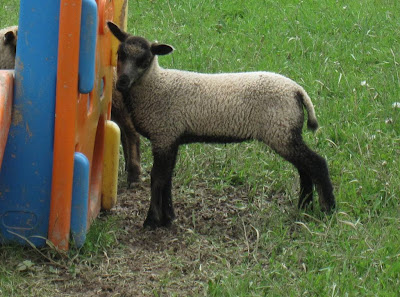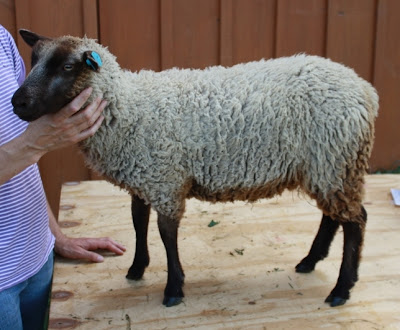It’s been a while since I’ve posted anything on our blog, so I thought I’d share some pictures of lambs that I still like. I can’t say for sure they will all be keepers (we are only keeping the 10 ewe lambs that we think best meet our requirements), but I like them for different reasons.
First are Itasca’s katmoget lambs out of Little Buckeroo. These lambs are 61% UK. I like the grey better than the fawn, but these lambs are a good example of the diversity you can get out of Shetlands. Both should be fine, but the fawn will have a longer fleece (maybe 5 inches) than the grey. I’ll post more current pictures once we get more time. As you look at the pictures, notice the differences in colors and markings, even though all of these lambs are katmogets.


The next lamb is Peridot’s out of Pompey. Just a tremendous grey katmoget ewe lamb with great genetics behind her. It was my first attempt at line breeding around Pompey. I took a Bond daughter and bred her to Pompey, who is her great grandfather. I just love the katmogets – especially this line. This lamb will be very fine; perhaps our finest. We are trying to breed for fine fleeces without losing some of the more valuable fleece traits such as silkiness, crimp, and lock structure. I would say this lamb looks similar to Itasca’s grey, but not quite. This lamb is only 43% UK, but I think you can see the influence of those genetics, and she would look very much at home in a UK Flock book flock. For those readers not familiar with what a Flock Book flock is, it’s an organization in the UK that inspects Shetlands to the 1927 standard (in fact, they wrote the standard). Only the best of the best qualify. I’m not saying this lamb would qualify, but UK folks would recognize her as a Shetland that meets most of the 1927 standard’s requirements. Oh, and yes, the Shetlands that were imported to North America in 1980 were from Flock Book flocks.

At birth, I thought Cor de Nuit’s ewe lamb was our best of the year, and I still think that way. She has a nice frame without possessing too much bone. Shetlands are supposed to be fine boned. But her overall conformation and fleece are pretty close to the total package. She is out of Pompey, and 43% UK. Again, not a huge percentage, but she looks quite a bit different than other Shetlands that you might see. She will also be fine, but perhaps not as fine as Peridot’s ewe. That’s what my evaluation is telling me. I’m not going to guess at the micron level for another month or so. I know what I think, but I’ll wait. This is one of those lambs that would’ve received a rather large breeding group had she been a ram. I’ve been looking for a ewe out of Cor de Nuit and now that she’s had one, I’m wishing it was a ram. I loathe myself sometimes. I like this lamb better than her half brother, Egyptian King.

The last lamb to share is Shiobhan’s grey katmoget. This lamb is pretty impressive as well. I would argue that she’s the prettiest lamb we’ve had here. This picture does a decent job of illustrating the markings and colors. She’s probably the darkest katmoget we’ve had here as well. Her fleece? Very yummy. As I said, we’ll post more pictures soon (just got back from vacation and are way behind on things). This lamb is 58% UK.
The point of this post is to illustrate how different the markings and colors can be with this breed. I like the darker colors (particularly the katmogets), but our breeding program revolves around quality, not color and markings. If the fleeces are exceptional (as all of these are), I don’t care about color and markings that much. Of course, that thought process gave us a flock that is predominately katmoget.
I’ve noticed that the road less travelled is a tough path to follow. It’s hard to breed for sheep of this quality, and it’s hard to sell grey katmogets. People seem to like spots. Heck, I Iike spots. I wish it was easy to produce spotted Shetlands with fleeces like these. I wish it were easy to find quality non-katmoget rams. Fortunately, we have one in Egyptian King, but we don’t have one in moorit. So, it’s tough. And it’s tempting to bite at the hook that a lot of customers seem to be putting in front of us. But, I unless we produce what I consider to be a quality Shetland, I don’t think we are doing anything for the breed. As a result, we’ll continue on this path and hopefully produce more variety of colors and markings along with stunning fleeces.




















